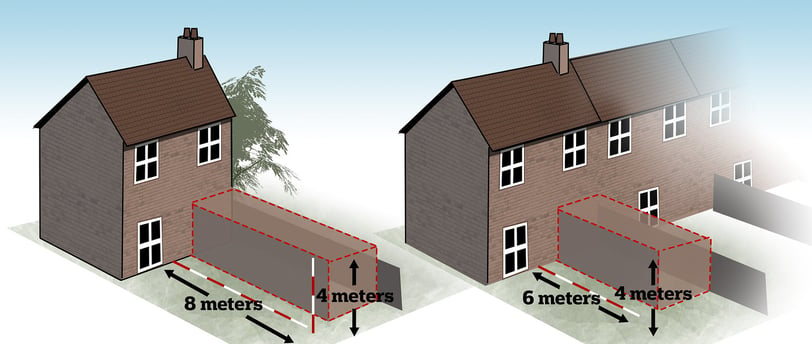Planning Permission UK: Rules for Detached, Semi-Detached & Terraced Homes (2025)
5/22/20253 min read


UK Planning Permission Rules: Detached, Semi-Detached, and Terraced Homes Explained (2025 Guide)
When it comes to extending your home or converting your loft, understanding the planning permission requirements is essential—and they often vary depending on the type of property you own. Whether you live in a detached house, a semi-detached property, or a terraced home, this guide outlines what you can and can’t do under Permitted Development Rights and when to seek full planning permission.
Why Property Type Affects Planning Rules
Not all homes are treated equally when it comes to development. Planning rules consider the impact on neighbours, the original footprint, and the position of the home on the plot. That’s why understanding what applies to your specific home type is so important before submitting any plans.
Planning Permission for Detached Homes
Permitted Development (PD) Rights for Detached Houses:
Detached homes enjoy the most flexibility under PD rights. Here’s what’s typically allowed:
Rear Extensions: Up to 8 metres (single-storey) without planning permission (subject to prior approval).
Side Extensions: Up to half the width of the original house.
Loft Conversions: up to 50 cubic metres of additional space (including dormers).
Outbuildings: Allowed if they cover less than 50% of the garden space and are under a certain height (usually 2.5 m–4m depending on roof type).
You’ll Need Full Planning Permission If:
Your home is listed or in a conservation area, AONB, National Park, or World Heritage Site.
You plan a two-storey rear extension within 7 metres of a rear boundary.
You want to raise the ridge height or make major changes to the principal elevation (e.g. front dormer).
Planning Permission for Semi-Detached Homes
Permitted Development Rules:
The rules for semi-detached homes are similar to those for detached homes, but there are slight differences due to the impact on the attached neighbours.
Rear Extensions: Up to 6 metres are allowed under PD with prior approval.
Loft Conversions: Max. 50 cubic metres of added space.
Side Extensions: Allowed, but must not front a highway and must be no more than one story.
When Planning Permission Is Required:
If the work significantly impacts your party wall or boundary, such as building directly up to your neighbour's wall, then planning permission is required.
Your house may be situated on specific land, such as a conservation area or greenbelt.
Any modifications that significantly alter the front elevation are required.
Important: A party wall agreement may also be needed.
Planning Permission for Terraced Homes
Permitted Development Limitations:
Terraced homes are the most restricted under PD rules, largely due to their proximity to neighbours on both sides.
Rear Extensions: Up to 6 metres (single-storey) with prior approval.
Loft Conversions: Max 40 cubic metres (not 50 like detached/semi).
No side extensions are allowed under PD.
Dormer lofts are allowed but must not face the front street and must be set back 20cm from the eaves.
You’ll Need Planning Permission If:
Your design includes raising the roof or changing the roof pitch.
You want a front-facing dormer or balcony.
The rear extension projects beyond 6 metres or is more than 4 metres in height.
Universal Design and Planning Tips (All Property Types)
Always check whether your home has had PD rights removed (common in new estates or flats).
Submit a Lawful Development Certificate (LDC) even if your extension falls under PD—it acts as legal proof later.
For larger extensions, especially those between 4 and 8 metres, use the Neighbour Consultation Scheme (Prior Approval Process).
Use external materials that are similar to the existing ones to maintain consistency, unless you are applying for permission for a bold design change.
Final Thoughts
Understanding your property’s category—detached, semi-detached, or terraced—is essential before undertaking any major renovation or extension. Planning permission isn’t always needed, but even within permitted development, rules are strict, especially regarding volume limits, height, materials, and location.
Before starting your home improvement project:
Speak with a planning consultant or architect.
Get written confirmation via a Lawful Development Certificate.
Always notify your local authority for peace of mind.